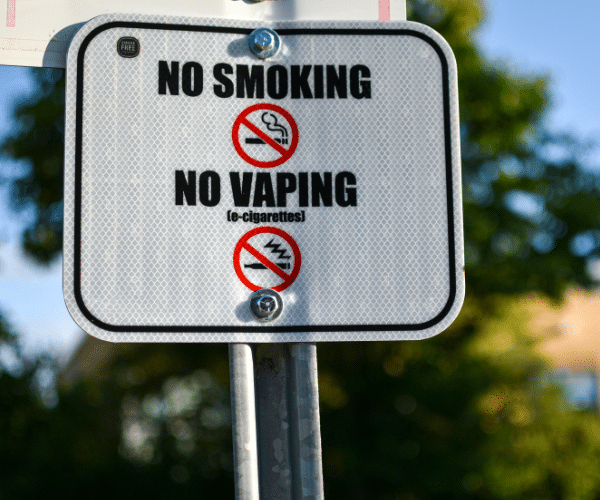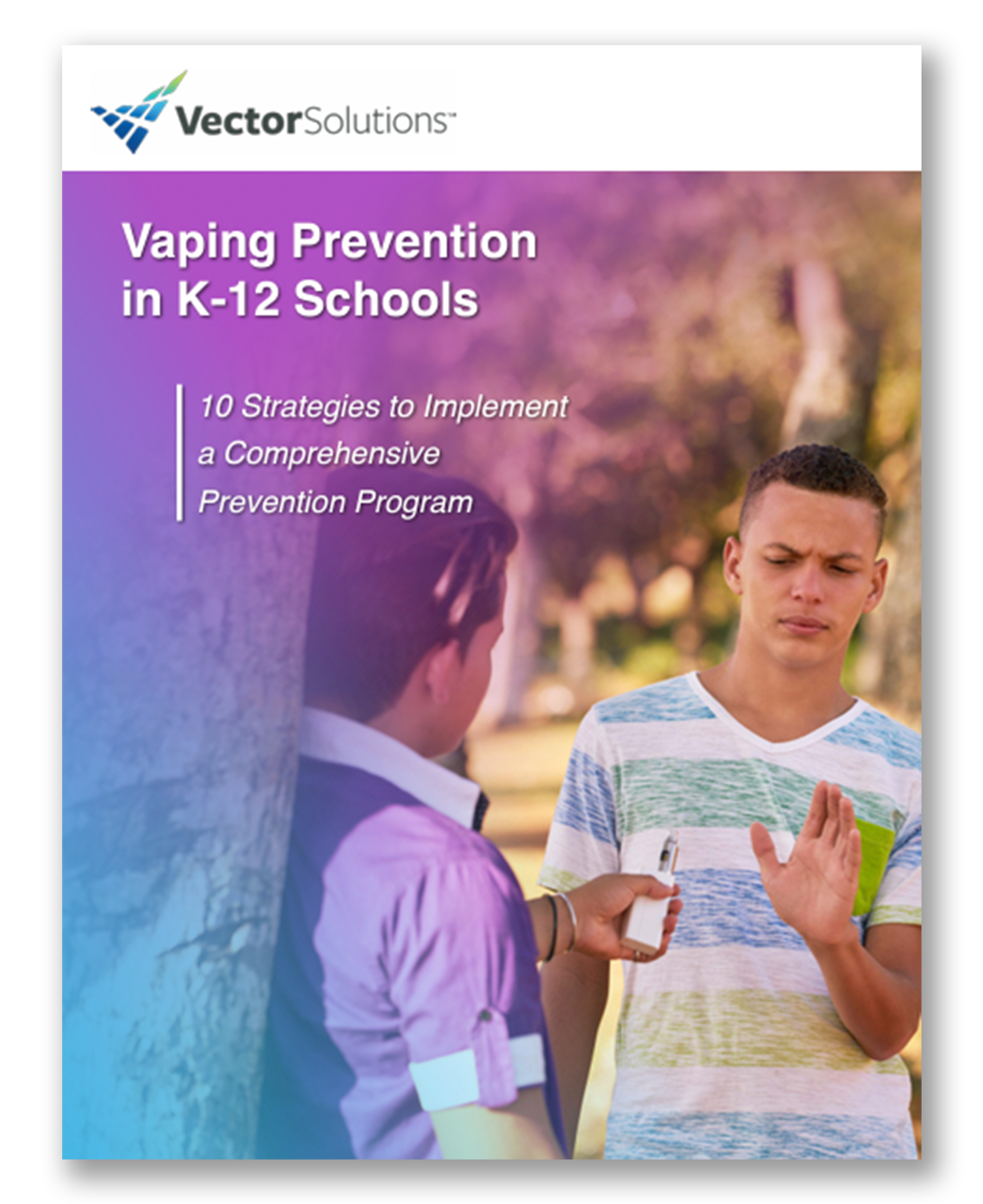August 16, 2023 min read

K-12 Vaping Prevention: Strategies to Change Attitudes and Behavior
Industry:
Solution:

Health Risks for Students
Vaping poses a significant risk to students’ health, as well as their academics. Consider these statistics:
- 2.5 million middle and high school students – more than 14% of high school students and 3.3% of middle school students – reported they had vaped in the past 30 days and 85% of vape users chose flavored vapes. (2022 National Youth Tobacco Survey)
- The average age students start vaping is 13.4 – right around the time they’re entering 7th or 8th grade. (PreventionFirst! Student Survey)
- 99% of vaping devices contain nicotine – even those that claim they don’t have nicotine have been found to contain it at lower levels, which can lead to stress, anxiety, depression and addiction and have a negative effect on students’ academics. (CDC)
- Nicotine is addictive and can harm the parts of the brain that control attention, learning, mood and impulse control according to the CDC. Vape juice contains chemicals such as chromium, iron and lead, and sometimes marijuana (CDC)
Comprehensive, data-driven approach
Taking a comprehensive, data-driven approach is the best way to create an effective prevention program. When developing vaping prevention programs, simply putting up posters or bringing in a speaker isn’t enough. When developing your prevention program, or evaluating it for areas of improvement, here are some questions to ask:
- Does it include universal prevention for all students, as well as targeted prevention for those at increased risk and intervention for students who have shown signs they are vaping?
- Does it utilize data such as surveys?
- Does your district have an up-to-date substance misuse policy?
- Do you provide professional development for all staff members and coaches?
- Is prevention education included in all curriculum areas? and is it done in a way that promotes critical thinking (rather than using scare tactics)?
- Is your district partnering with parents and community organizations?
- Does your district have a process to screen students and refer them for help if needed?
If the answer to any of these questions is “no,” it may be time to make some updates. Vector Solutions’ Vaping Prevention in K-12 Schools Guide provides helpful data, insights, and strategies to support districts in creating comprehensive vaping prevention programs.
Vaping Prevention in K-12 Schools:
10 Strategies to Implement a Comprehensive Prevention Program
Download Free Guide
Preventing vaping requires changing students’ attitudes and beliefs – which then changes their behavior. Creating a comprehensive, data-driven vaping prevention program is the best way to do this and will go a long way toward helping your school or district combat the vaping epidemic.
For more vaping prevention resources:
- Watch the Vector Solutions’ webinar “The Vaping Epidemic: What Schools Can Do”
- Schedule a demo of Vector Solutions’ Student Safety and Wellness Courses for students and online training for educators.







